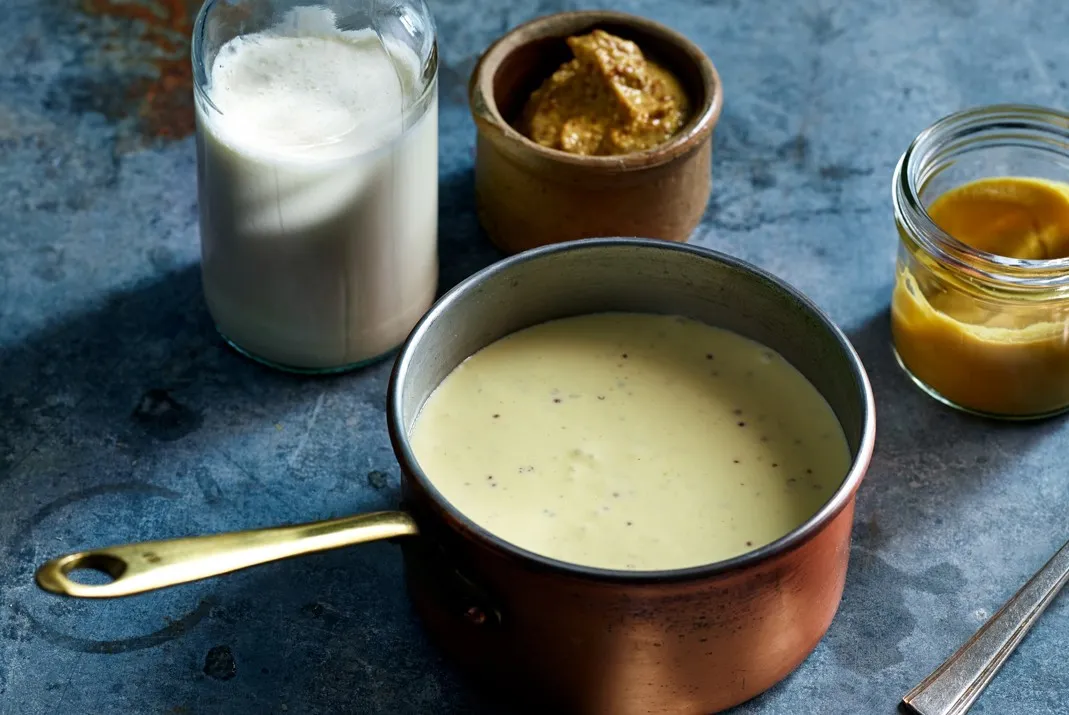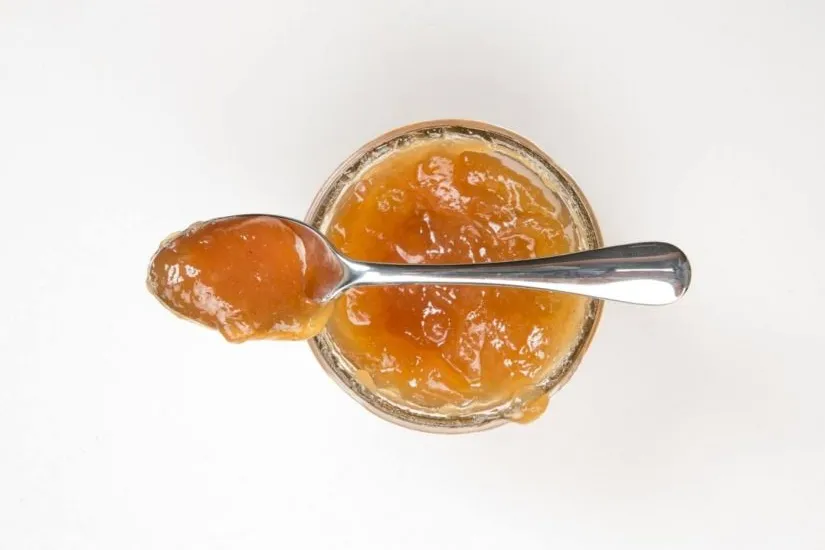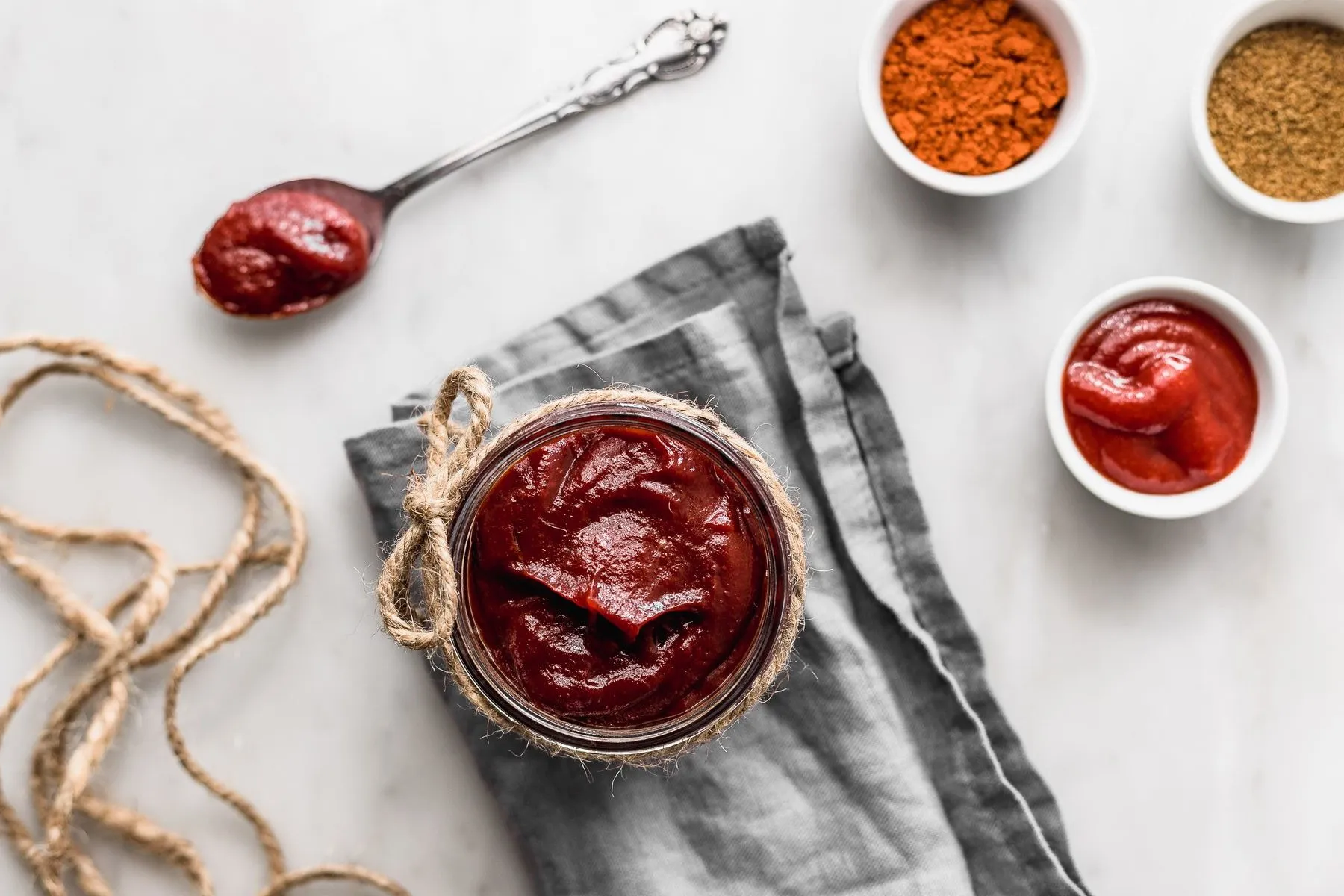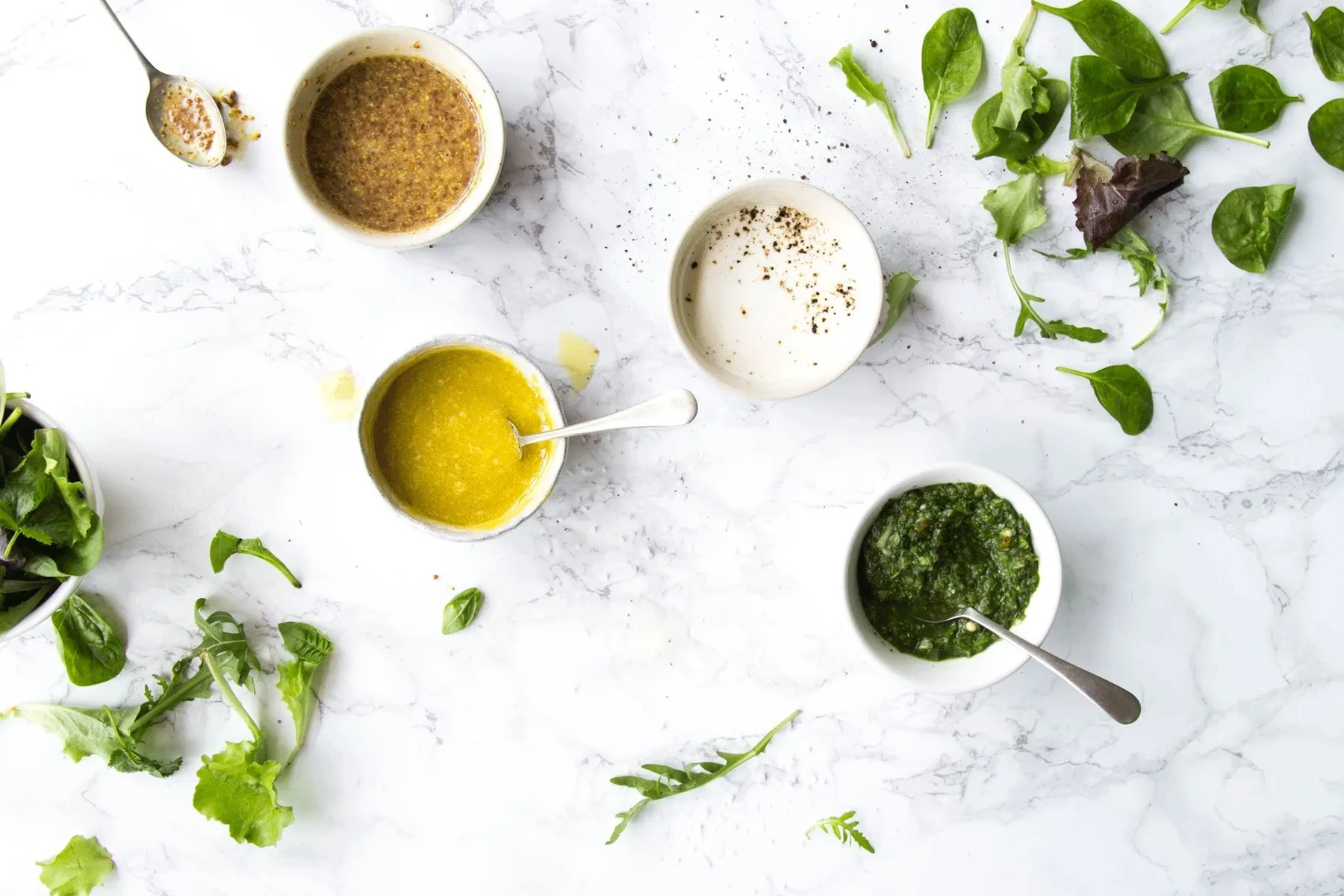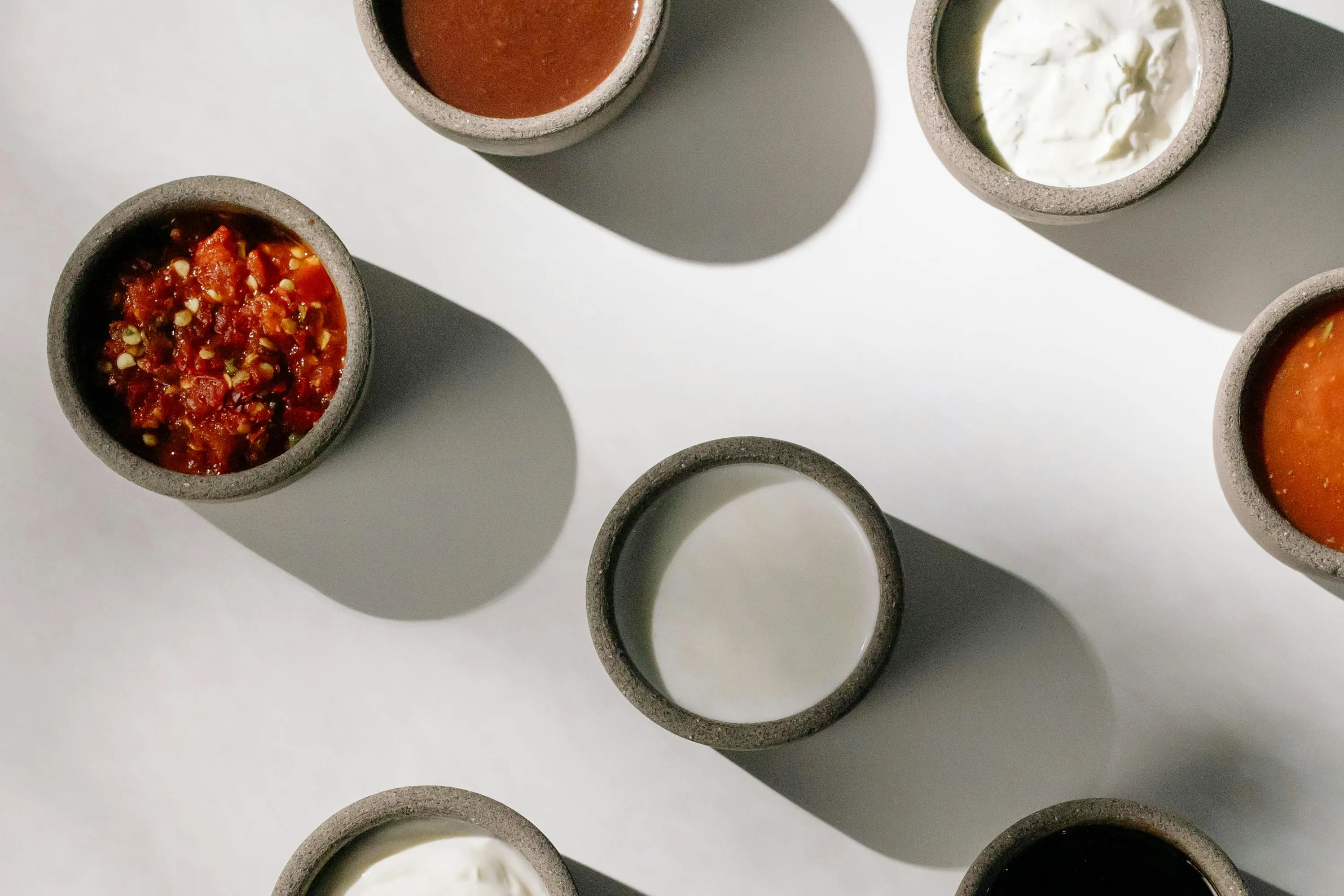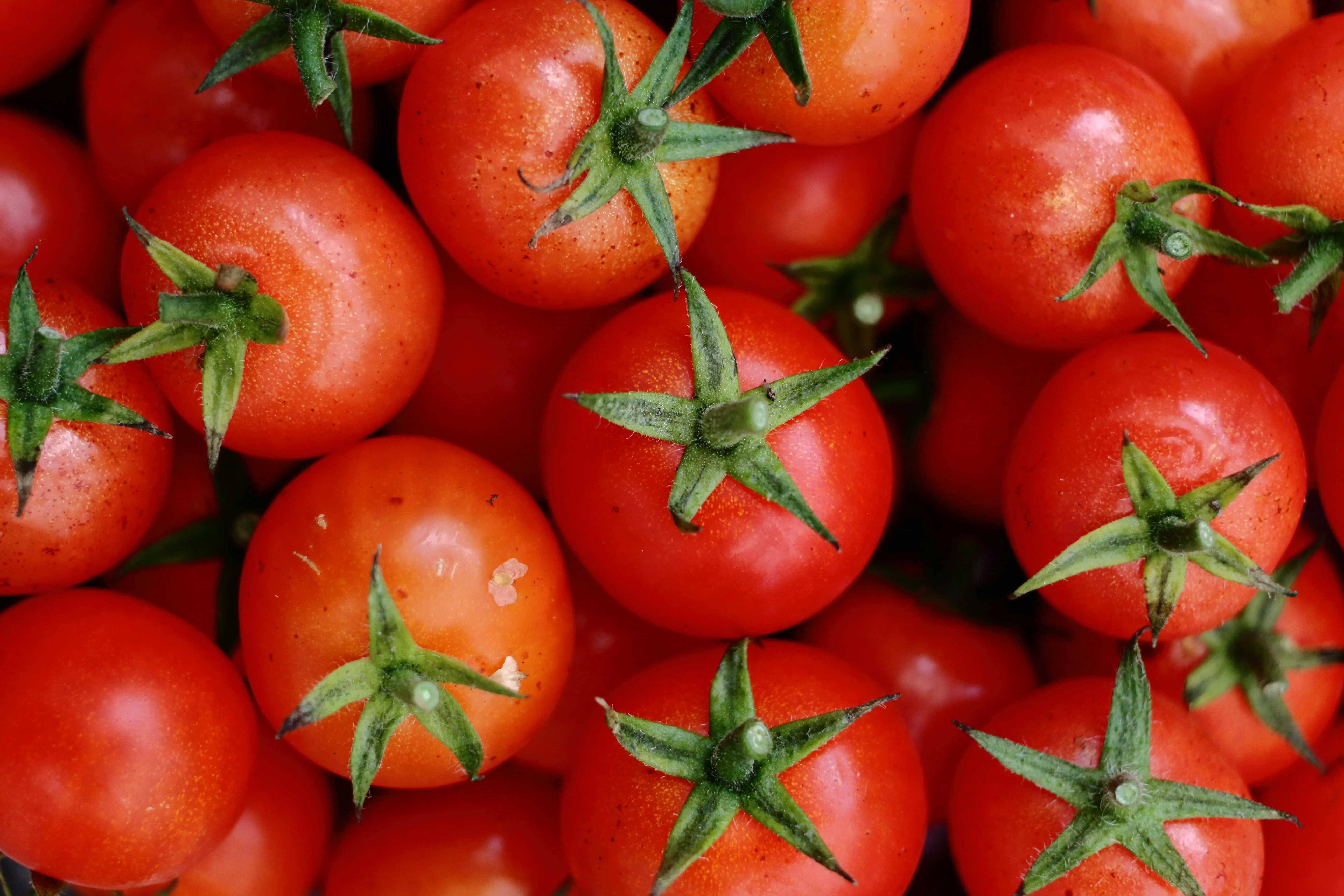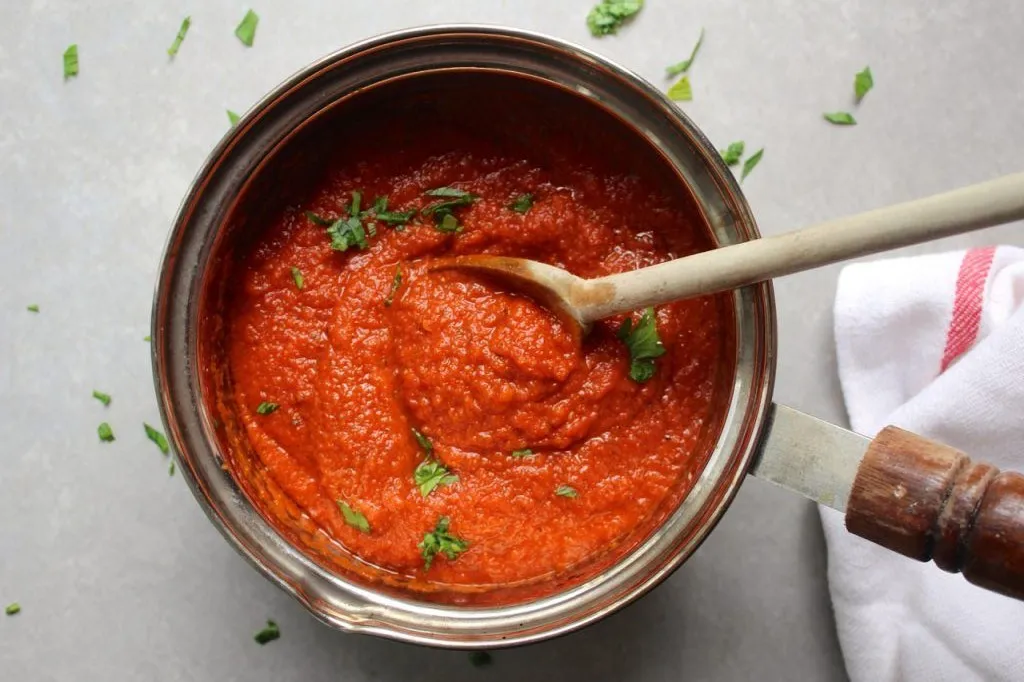
It’s worth mentioning that there is no single definitive recipe for marinara sauce. The name originates from the Italian word "marinaro," meaning sailor. In its classic form, the sauce includes something from the sea, such as salty anchovies or well-salted sardines. However, over time and through widespread use, the recipe has been simplified to its core. Marinara can be as simple as tomato passata with salt, garlic, olive oil, salt, and pepper. It can also include celery and onion or herbs like sage or basil.
- 300 ml passata
- 1 small onion
- 1 tsp. dried oregano or marjoram
- olive oil
It’s easier to buy ready-made passata. However, if you wish, you can prepare it yourself. Finely chop the onion, add oregano, and sauté it in olive oil until the onion turns an opaque white. Pour in the passata and immediately turn off the heat. The passata will come to a boil right away. That’s it — your sauce is ready. With onion, it’s perfect for turkey dishes; with garlic, it pairs well with fish.
It’s easier to buy ready-made passata. However, if you wish, you can prepare it yourself. Finely chop the onion, add oregano, and sauté it in olive oil until the onion turns an opaque white. Pour in the passata and immediately turn off the heat. The passata will come to a boil right away. That’s it — your sauce is ready. With onion, it’s perfect for turkey dishes; with garlic, it pairs well with fish.

